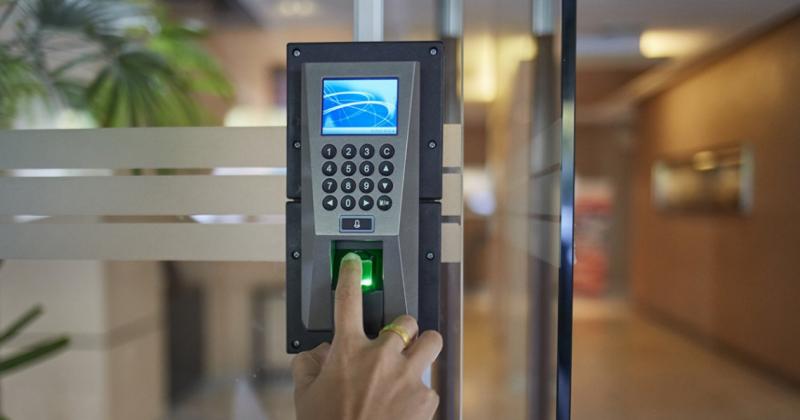When most people think about security, they focus on keeping their computer systems secure from attackers. However, physical security is just as important. This article will discuss physical access controls and how you can use them to protect your business.
Let’s dive in!
Defining physical access control systems
Physical access control systems are how a person’s physical presence in a particular area is regulated. This can include door locks, ID card access, or guard stations. These systems can be used for security, such as keeping unauthorized individuals out of sensitive areas. They can also help with tracking attendance and managing employee schedules.
Physical access control systems, such as video cameras or biometric scanners, may also be integrated with electronic surveillance. These systems provide a way to manage and restrict physical access to specific locations or features to ensure safety and security.
Types of physical access control systems
The following types of physical access control solutions are available.
Cylinder systems
When it comes to Physical access control, there are various options available. One popular option is the cylinder system, which utilizes keys and locks to restrict access to a particular area. This system provides a high level of security, as each key can be uniquely designed and programmed for specific individuals or groups.
In addition, the cylinder system offers flexibility regarding potential upgrades or adjustments, as keys and locks can easily be replaced without installing new hardware. However, it is essential to properly manage key distribution and keep track of any duplicate keys that may have been made.
Overall, the cylinder system provides reliable and customizable physical access control solutions for businesses and organizations.
Identification media
A critical aspect of physical access control is identification media, such as keys, badges, and keycards. While keys have been used for centuries to keep out unauthorized individuals, they can also be easily lost or copied.
Electronic badges and keycards offer a more secure option, as they can be programmed only to allow access to specific users, and they cannot be duplicated. Biometric identification, such as a thumbprint or facial recognition scanners, provides even higher levels of security by ensuring only the authorized individual can gain access. Identification media is necessary to ensure that only authorized individuals can access restricted areas and protect against unauthorized entry.
Readers
When it comes to physical security, access control is a vital component. One way to restrict access to sensitive areas is by using readers. These devices can be programmed to allow entry only to authorized individuals using methods such as personal identification numbers, swipe cards, and biometric information.
But readers aren’t just for locked doors- they can also control elevators, parking garages, and computer networks. Not only do readers help keep intruders out, but they also provide an audit trail for monitoring who goes where and when.
Whether used alone or with other security measures, readers are a valuable tool in maintaining physical access control.
Why physical access controls work
Access control is a crucial part of any security plan, and physical access controls are often the first line of defense in preventing unauthorized entry. These measures range from basic locked doors to advanced biometrics like fingerprint scanners.
But why do they work? One main reason is deterrence: the very presence of these physical barriers sends a clear message that unauthorized entry is not allowed.
In addition, physical access controls restrict movement within a building or facility, limiting access to sensitive areas and reducing the risk of theft or espionage.
Finally, even if a potential intruder bypassed these controls, they would still leave a clear trail for investigators to follow.
Overall, physical access controls provide an effective and necessary layer of protection for any secure facility.
Typical applications for physical access control systems
Physical access control systems can be found in various settings, from small businesses to government buildings. One common application is for employee entry into an office or workplace.
Authorized employees are granted access through critical cards or biometric scanners, while unauthorized individuals can be easily identified and denied entry.
Additionally, physical access control systems can restrict access to certain areas within a building – for example, a high-security server room may require special clearance for entry.
Physical access control can also play a role in loss prevention – by tracking who enters and exits certain areas, businesses can reduce theft and monitor inventory more effectively.
Overall, these systems provide added security and efficiency for individuals and organizations.
With that said
As you can see, many different types of physical access controls can be employed to keep an environment secure. Choosing the correct type of physical access control for your needs is crucial, as each has its advantages and disadvantages.
Hopefully, this article has helped you to understand the different types of physical access controls and how they can be used to improve security in your home or workplace.

